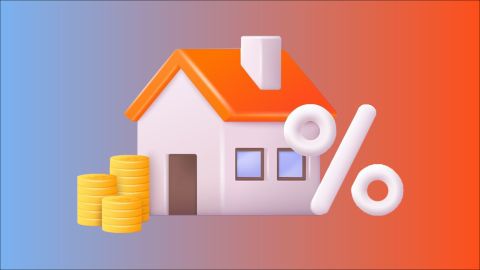As a pensioner, navigating the complexities of tax filings can seem challenging. One of the essential documents in this process is Form 16, a crucial form issued annually by employers to salaried individuals, and for pensioners, it serves as an important document for tax filing purposes. This guide will walk you through everything you need to know about Form 16 for pensioners, helping you understand its components, its significance, and how to use it effectively.
What is Form 16?
Form 16 is a certificate issued by employers or pension disbursing authorities, detailing the income earned and taxes deducted during a financial year. For pensioners, the pension disbursing bank or the organisation from where you receive the pension issues Form 16. It acts as proof that taxes have been deducted at source (TDS) and deposited with the government.
Why is Form 16 important for pensioners?
Form 16 is crucial for pensioners for several reasons:
- Proof of income: It serves as an official record of the pension income received during the financial year.
- Tax filing: It simplifies the process of filing Income Tax Returns (ITR) by providing all necessary details about income and TDS.
- Loan applications: Form 16 can be used as proof of income when applying for financial products like personal loans, home loans, or other credit facilities.
Components of Form 16
Form 16 is divided into two parts: Part A and Part B.
Part A
Part A contains basic information about the pensioner and the pension disbursing authority:
- Personal information: Name, address, and PAN (Permanent Account Number) of the pensioner.
- Employer details: Name, address, and TAN (Tax Deduction and Collection Account Number) of the pension disbursing authority.
- Summary of TDS: Details of taxes deducted and deposited with the government.
Part B
Part B is an annexure to Part A and provides detailed information about the pensioner’s income and deductions:
- Income details: Breakup of the pension received, including any other income sources if applicable.
- Deductions: Information about various deductions under Chapter VI-A of the Income Tax Act, such as Section 80C (investments in PPF, NSC, life insurance premiums), Section 80D (health insurance premiums), and others.
- Tax payable: Calculation of the total taxable income and the tax liability after considering deductions.
How to use Form 16 for filing income tax returns
Using Form 16 to file your income tax return is straightforward. Here’s a step-by-step guide:
- Collect Form 16: Ensure you receive Form 16 from your pension disbursing authority.
- Verify details: Check all details mentioned in Form 16, such as your PAN, income, and TDS amounts.
- Login to income tax portal: Visit the official Income Tax Department e-filing portal and log in with your credentials.
- Choose the correct ITR form: For pensioners, ITR-1 (Sahaj) is usually the applicable form.
- Fill in the details: Enter the details from Form 16 into the relevant sections of the ITR form.
- Claim deductions: Ensure you claim all eligible deductions mentioned in Part B of Form 16.
- Calculate tax liability: The portal will automatically calculate your tax liability based on the information provided.
- Submit and e-verify: Submit the return and complete the e-verification process.
Key points for pensioners to remember
- Multiple pensions: If you receive multiple pensions, ensure you have Form 16 from each disbursing authority.
- Other income: Declare any other income, such as interest from savings accounts, fixed deposits, or rental income, even if not mentioned in Form 16.
- Tax deductions: Utilize tax-saving options available under various sections of the Income Tax Act to reduce your taxable income.
Financial products for Pensioners
As a pensioner, managing finances is crucial. Here are some financial products that can be beneficial:
- Health insurance: Health insurance is vital for covering medical expenses, especially in the retirement phase. Look for policies that offer comprehensive coverage, including critical illness and hospitalization benefits.
- Fixed Deposits (FDs): Fixed deposits are a safe investment option for pensioners, providing a regular income stream. Senior citizens often get higher interest rates on FDs, making them an attractive choice.
- Mutual Funds: For those willing to take some risk, mutual funds can offer better returns compared to traditional savings. There are various schemes tailored for different risk appetites, including debt funds, balanced funds, and equity funds.
- Senior Citizens Savings Scheme (SCSS): The SCSS is a government-backed scheme offering attractive interest rates and is specially designed for individuals above 60 years. It’s a secure investment avenue providing regular income.
- Home loans for pensioners: Pensioners looking to buy a home or need funds for renovating an existing property can consider home loans. Financial institutions offer home loans tailored for pensioners, taking into account their pension income as repayment capability.
Form 16 is a vital document for pensioners, simplifying the tax filing process and ensuring compliance with tax regulations. By understanding its components and how to use it effectively, pensioners can manage their finances better and make informed decisions about various financial products. Whether it’s investing in health insurance, fixed deposits, mutual funds, or considering a loan, having a clear understanding of Form 16 helps in efficient financial planning and securing a stable future.









 Personal Loan
Personal Loan Check Eligibility
Check Eligibility Salaried Personal Loan
Salaried Personal Loan EMI Calculator
EMI Calculator Account Aggregator
Account Aggregator Credit Pulse Report
Credit Pulse Report
 Deals starting @99
Deals starting @99 Min. 50% off
Min. 50% off
 Bajaj Pay
Bajaj Pay Wallet to Bank
Wallet to Bank
 Easy EMI Loan
Easy EMI Loan Savings Offer
Savings Offer Smartphones
Smartphones Led TVs
Led TVs Washing Machines
Washing Machines Laptops
Laptops Refrigerators
Refrigerators Air Conditioner
Air Conditioner Air Coolers
Air Coolers
 Loan Against Shares
Loan Against Shares Loan Against Mutual Funds
Loan Against Mutual Funds Loan Against Insurance Policy
Loan Against Insurance Policy ESOP Financing
ESOP Financing Easy EMI Loan
Easy EMI Loan Two-wheeler Loan
Two-wheeler Loan Loan for Lawyer
Loan for Lawyer Industrial Equipment Finance
Industrial Equipment Finance Industrial Equipment Balance Transfer
Industrial Equipment Balance Transfer Industrial Equipment Refinance
Industrial Equipment Refinance Personal Loan Branch Locator
Personal Loan Branch Locator Used Tractor Loan
Used Tractor Loan Loan Against Tractor
Loan Against Tractor Tractor Loan Balance Transfer
Tractor Loan Balance Transfer Flexi
Flexi View All
View All
 Two-wheeler Loan
Two-wheeler Loan Bike
Bike Scooter
Scooter Electric Vehicle
Electric Vehicle Best Sellers
Best Sellers Popular Brands
Popular Brands

 Trading Account
Trading Account Open Demat Account
Open Demat Account Margin Trading Financing
Margin Trading Financing Share Market
Share Market Invest in IPO
Invest in IPO All stocks
All stocks Top gainers
Top gainers Top losers
Top losers 52 week high
52 week high 52 week low
52 week low Loan against shares
Loan against shares
 Home Loan
Home Loan Transfer your existing Home loan
Transfer your existing Home loan Loan against Property
Loan against Property Home Loan for Salaried
Home Loan for Salaried Home loan for self employed
Home loan for self employed Loan Against Property Balance Transfer
Loan Against Property Balance Transfer Home Loan EMI Calculator
Home Loan EMI Calculator Home Loan eligibility calculator
Home Loan eligibility calculator Home Loan balance transfer
Home Loan balance transfer View All
View All
 Term Life Insurance
Term Life Insurance ULIP Plan
ULIP Plan Savings Plan
Savings Plan Family Insurance
Family Insurance Senior Citizen Health Insurance
Senior Citizen Health Insurance Critical Illness Insurance
Critical Illness Insurance Child Health Insurance
Child Health Insurance Pregnancy and Maternity Health Insurance
Pregnancy and Maternity Health Insurance Individual Health Insurance
Individual Health Insurance Low Income Health Insurance
Low Income Health Insurance Student Health Insurance
Student Health Insurance Group Health Insurance
Group Health Insurance Retirement Plans
Retirement Plans Child Plans
Child Plans Investment Plans
Investment Plans
 Business Loan
Business Loan Secured Business Loan
Secured Business Loan Loan against property
Loan against property Loans against property balance transfer
Loans against property balance transfer Loan against shares
Loan against shares Home Loan
Home Loan Loans against mutual funds
Loans against mutual funds Loan against bonds
Loan against bonds Loan against insurance policy
Loan against insurance policy
 Apply for Gold Loan
Apply for Gold Loan Transfer your Gold Loan with Us
Transfer your Gold Loan with Us Gold Loan Branch Locator
Gold Loan Branch Locator
 ULIP Plan
ULIP Plan Savings Plan
Savings Plan Retirement Plans
Retirement Plans Child Plans
Child Plans Free Demat Account
Free Demat Account Invest in Stocks
Invest in Stocks Invest in IPO
Invest in IPO Margin Trading Facility
Margin Trading Facility Fixed Deposit Branch Locator
Fixed Deposit Branch Locator
 Check your Credit Score
Check your Credit Score
 New Car Loan
New Car Loan Used Car Loan
Used Car Loan Loan Against Car
Loan Against Car Car Loan Balance Transfer and Top-up
Car Loan Balance Transfer and Top-up My Garage
My Garage
 Get Bajaj Prime
Get Bajaj Prime
 Mobiles on EMI
Mobiles on EMI Electronics on EMI Offer
Electronics on EMI Offer  Iphone on EMI
Iphone on EMI LED TV on EMI
LED TV on EMI Refrigerator on EMI
Refrigerator on EMI Laptop on EMI
Laptop on EMI Kitchen appliances on EMI
Kitchen appliances on EMI Washing machines
Washing machines
 Personal Loan EMI Calculator
Personal Loan EMI Calculator Personal Loan Eligibility Calculator
Personal Loan Eligibility Calculator Home Loan EMI Calculator
Home Loan EMI Calculator Home Loan Eligibility Calculator
Home Loan Eligibility Calculator Good & Service Tax (GST) Calculator
Good & Service Tax (GST) Calculator Flexi Day Wise Interest Calculator
Flexi Day Wise Interest Calculator Flexi Transaction Calculator
Flexi Transaction Calculator Secured Business Loan Eligibility Calculator
Secured Business Loan Eligibility Calculator Fixed Deposits Interest Calculator
Fixed Deposits Interest Calculator Two wheeler Loan EMI Calculator
Two wheeler Loan EMI Calculator New Car Loan EMI Calculator
New Car Loan EMI Calculator Used Car Loan EMI Calculator
Used Car Loan EMI Calculator All Calculator
All Calculator Used Tractor Loan EMI Calculator
Used Tractor Loan EMI Calculator
 Hot Deals
Hot Deals Clearance Sale
Clearance Sale Kitchen Appliances
Kitchen Appliances Tyres
Tyres Camera & Accessories
Camera & Accessories Mattresses
Mattresses Furniture
Furniture Watches
Watches Music & Audio
Music & Audio Cycles
Cycles Mixer & Grinder
Mixer & Grinder Luggage & Travel
Luggage & Travel Fitness Equipment
Fitness Equipment Fans
Fans
 Personal Loan for Doctors
Personal Loan for Doctors Business loan for Doctors
Business loan for Doctors Home Loan
Home Loan Secured Business Loan
Secured Business Loan Loan against property
Loan against property Secured Business Loan Balance Transfer
Secured Business Loan Balance Transfer Loan against share
Loan against share Gold Loan
Gold Loan Medical Equipment Finance
Medical Equipment Finance
 Smart Hub
Smart Hub ITR Service
ITR Service Digi Sarkar
Digi Sarkar
 Savings Offer
Savings Offer Easy EMI
Easy EMI Offer World
Offer World 1 EMI OFF
1 EMI OFF New Launches
New Launches Zero Down Payment
Zero Down Payment Clearance Sale
Clearance Sale Bajaj Mall Sale
Bajaj Mall Sale
 Mobiles under ₹20,000
Mobiles under ₹20,000 Mobiles under ₹25,000
Mobiles under ₹25,000 Mobiles under ₹30,000
Mobiles under ₹30,000 Mobiles under ₹35,000
Mobiles under ₹35,000 Mobiles under ₹40,000
Mobiles under ₹40,000 Mobiles under ₹50,000
Mobiles under ₹50,000
 Articles
Articles
 Overdue Payments
Overdue Payments Other Payments
Other Payments
 Document Center
Document Center Bank details & Documents
Bank details & Documents Tax Invoice Certificate
Tax Invoice Certificate
 Do Not Call Service
Do Not Call Service
 Hamara Mall Orders
Hamara Mall Orders

 Fixed Deposit (IFA) Partner
Fixed Deposit (IFA) Partner Loan (DSA) Partner
Loan (DSA) Partner Debt Management Partner
Debt Management Partner EMI Network Partner
EMI Network Partner Became a Merchant
Became a Merchant Partner Sign-in
Partner Sign-in
 Trade directly with your Demat A/c
Trade directly with your Demat A/c ITR
ITR My Garage
My Garage
 Live Videos - Beta
Live Videos - Beta
 Savings Offer
Savings Offer Smartphones
Smartphones LED TVs
LED TVs Washing Machines
Washing Machines Laptops
Laptops Refrigerators
Refrigerators Air Conditioners
Air Conditioners Air Coolers
Air Coolers Water Purifiers
Water Purifiers Tablets
Tablets Kitchen Appliances
Kitchen Appliances Mattresses
Mattresses Furniture
Furniture Music and Audio
Music and Audio Cameras & Accessories
Cameras & Accessories Cycle
Cycle Watches
Watches Tyres
Tyres Luggage & Travel
Luggage & Travel Fitness Equipment
Fitness Equipment Tractor
Tractor Easy EMI Loan
Easy EMI Loan
 vivo Mobiles
vivo Mobiles OPPO Mobiles
OPPO Mobiles Xiaomi Mobiles
Xiaomi Mobiles Sony LED TVs
Sony LED TVs Samsung LED TVs
Samsung LED TVs LG LED TVs
LG LED TVs Haier LED TVs
Haier LED TVs Godrej Refrigerators
Godrej Refrigerators Voltas Washing Machines
Voltas Washing Machines
 New Tractor Loan
New Tractor Loan Used Tractor Loan
Used Tractor Loan Loan Against Tractor
Loan Against Tractor Tractor Loan Balance Transfer
Tractor Loan Balance Transfer
 New Car Loan
New Car Loan New Cars Under ₹10 Lakh
New Cars Under ₹10 Lakh New Cars – ₹10–₹15 Lakh
New Cars – ₹10–₹15 Lakh New Cars – ₹15–₹20 Lakh
New Cars – ₹15–₹20 Lakh New Cars – ₹20–₹25 Lakh
New Cars – ₹20–₹25 Lakh New Car Brands
New Car Brands Petrol – New Cars
Petrol – New Cars Diesel – New Cars
Diesel – New Cars Electric – New Cars
Electric – New Cars CNG – New Cars
CNG – New Cars Hybrid – New Cars
Hybrid – New Cars






